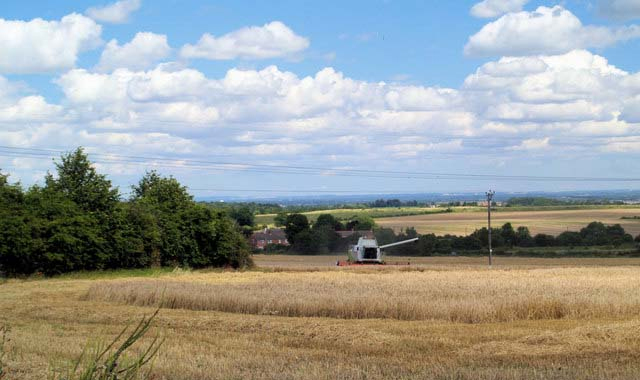
Farmland values increased by 2.5% over the last six months to the end of 2014, and are expected to rise 3% in 2015.
This rise disguised a growing and more distinct regional variation, with values in the South and East of England achieving values of circa £14,000 whilst the South West witnessed values of £9,000 per acre. Location, type and quality remained key factors in achieving prime values together with the strength of the local market.
The supply of land remained increasingly restricted, with a total of almost 120,000 acres being openly marketed across the UK in 2014, a 15% decrease from its previous year’s level. As a result of the tightening supply of openly marketed land, the volume of off market sales increased significantly during 2014, accounting for a third of all Carter Jonas transactions in 2014 as clients increasingly considered seeking out private deals in order to gain exposure within the sector. This trend is expected to continue and will help to sustain the continued capital value growth forecast during 2015.
Demand became increasingly localised across the farmland market during 2014, with lot sizes over 1,000 acres proving most attractive. The diversity of demand for agricultural land is clearly illustrated in the chart above, with farmers accounting for the highest proportion of transactions completed by Carter Jonas during 2014 at 28%, closely followed by lifestyle (24%) and investors (20%).
Andrew Fallows, partner in Carter Jonas’ national farms and estates team, said: “The halo effect surrounding London remained significant and is expected to build momentum during 2015 as the Capital continues to thrive in performance and remuneration levels are set to outpace inflation. The halo effect is particularly prevalent in the country house market with a maximum of 50 acres, although holdings with larger parcels of land continue to benefit, albeit to a lesser extent.”
“The inevitability of increasing interest rates, currently predicted to occur in the second half of 2015, is also expected to impact the general tone of the land market and our forecasts predict that average land values will increase 3% during 2015.”
During H2 2014, the average cost of farmland rose to £10,067 per acre across England and Wales, hitting a record high for the eleventh consecutive period. During the same period in 2013 an acre cost, on average, £9,294. Despite anecdotal evidence that the recent fall in commodity prices is starting to temper the pace of demand – particularly for smaller areas of land in all parts of the country - prices are expected to continue to rise over the next 12 months.
The increase in demand from ‘lifestyle’ buyers that began in H2 2013 continued throughout the whole of 2014 with this trend being noticed across most parts of the UK. This is adding to price pressures and is supporting expectations for further increases. Anecdotal evidence also indicates continued strong demand from investor purchasers in pursuit of larger parcels of prime land. Across the UK the supply of commercial farmland at best remained flat or decreased in nine of the ten areas, while demand has continued to grow in all but one part of the UK.
According to surveyors, average arable land rents remained relatively flat during 2014 at £158 per acre, while average pasture rents rose by 7.8% over the year to reach £107 per acre.
The highest annual price growth in the UK was seen in Scotland, despite uncertainty driven by the referendum and CAP review. Prices in Scotland rose almost 17% over the year, although at just £4,375 per acre, prices in Scotland are still 47% below the national average with the price of pasture land at least 40% cheaper than any other part of the UK. It remains to be seen whether the recent announcement on plans to overhaul tenant farming will have any effect on land prices.
Yorkshire and Humber and Wales also witnessed particularly strong price growth during 2014 with arable land in both areas driving the rises.
Josh Miller, RICS Senior Economist, commented: “Farmland prices continue. Competition for the right plots remains fierce, especially amongst farmers, while demand from lifestyle farmers is showing signs of life”.
“Although there remain a number of risks on the horizon, including commodity price volatility, the forthcoming general election and a possible exit from the EU, surveyors remain confident on the whole that prices will continue to rise over the next 12 months”
Alex Lawson head of Savills farms and estates team comments, “The range in values for farmland is now so significant that there are buyers who are choosing to take advantage of the relatively good value poorer quality livestock land.
Ian Bailey head of rural research comments, “Clearly an understanding of local market conditions will be critical to both buyer and seller to ensure realistic expectations.”
